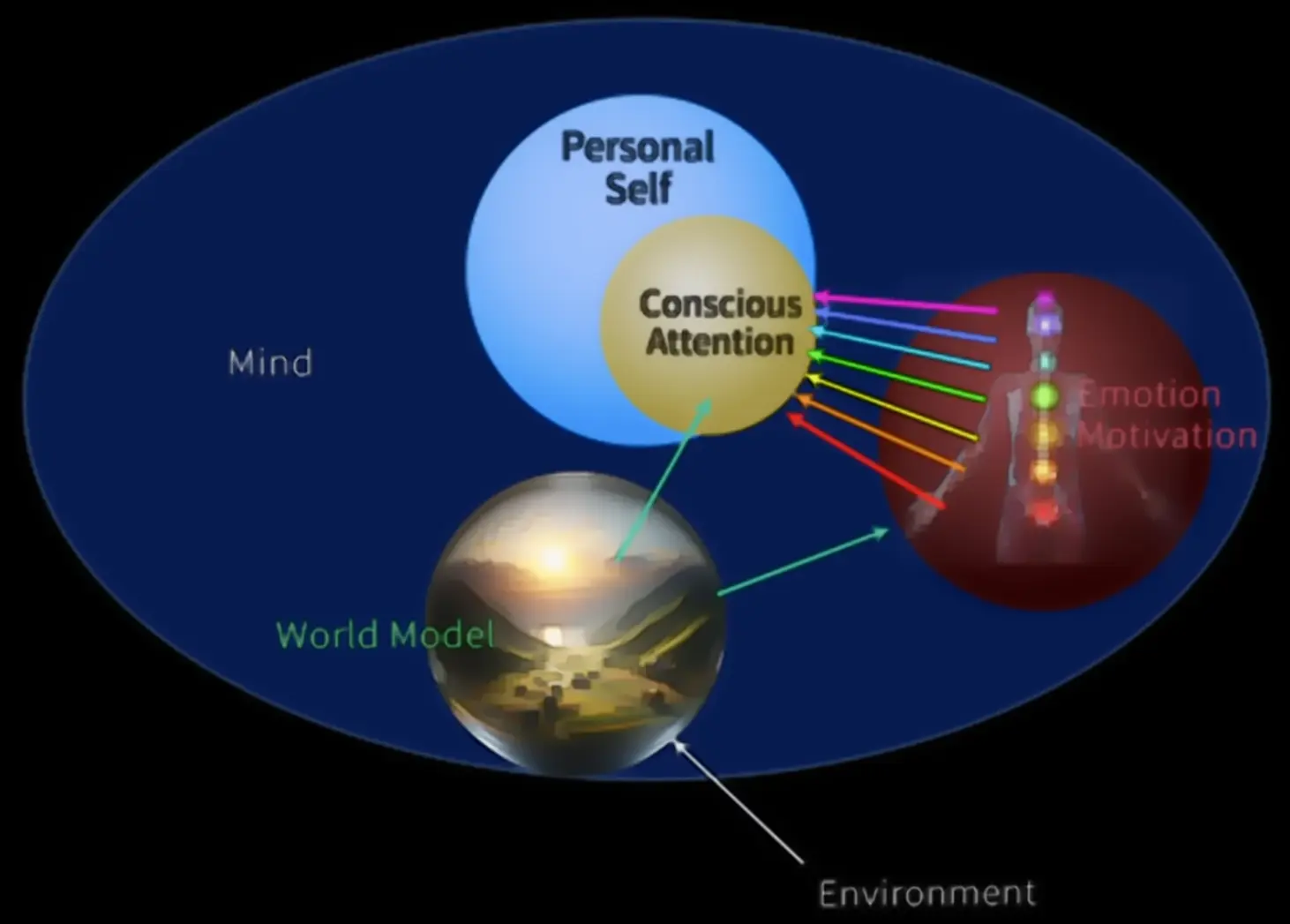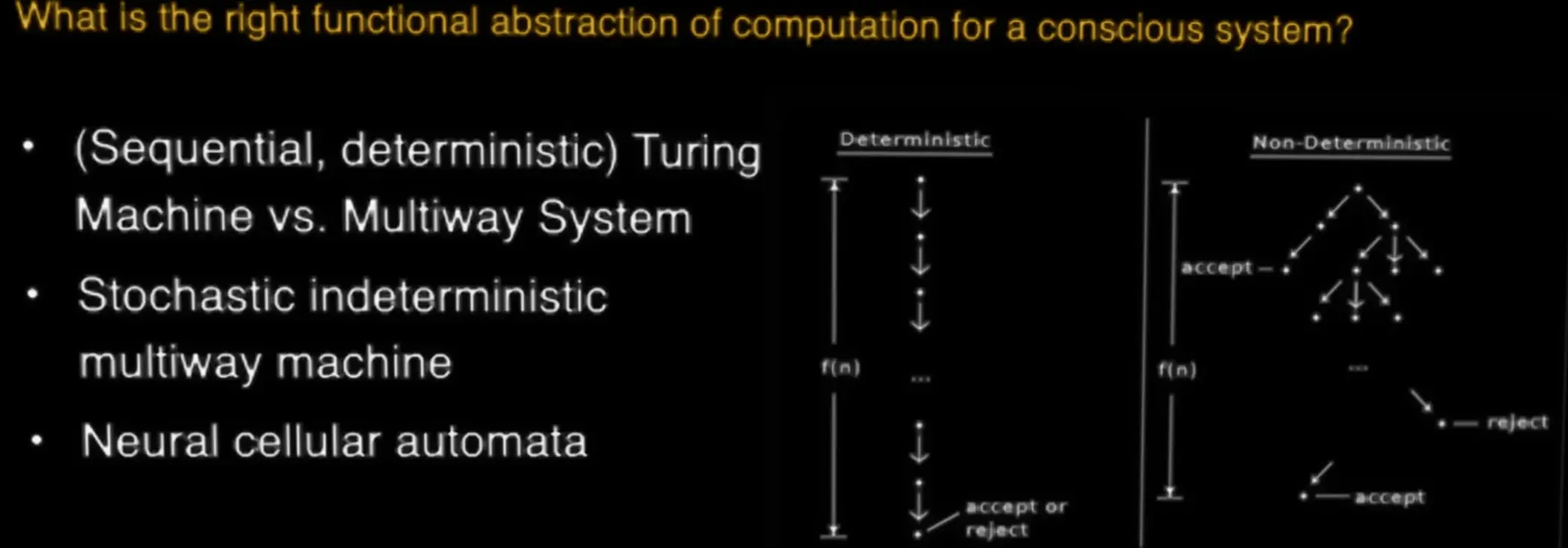The mind: A collection of components that make for a self-organizing software agent / a “spirit”.
Link to originalTaking the spiritual element out of animism, we could define it as follows:
Animism: The invariance of living nature is spirit.
Spirit = self-organizing software agent.Darwin: evolution = competition between species.
Dawkins: evolution = competition between molecules.
Animism: evolution = competition between software agents.
The interaction between the mind, personal self, motivation / emotions, consciousness and the world model.
This graphic is ofc. hilariously oversimplified and if we want to achieve consciousness, we should not try to recreate this by hand-designing it - in the machine consciousness talk, some more complex interaction diagrams are shown in the ~ last third iirc.
Most of the time, our mental states are in superpositions represented by populations of neurons.
Lot’s of parallel computations are happening, different hypothesis branching out in different parts of the brain, sampling a space of functions, as opposed to sequential, deterministic decision making as you would have it in a computer (see also NOW model).
→ in order to understand the message passing architecture of consciousness, we need a non-deterministic turing machine, like neural cellular automata
“Ultimately it does not matter, because an AGI will be able to virtualiue itself on any substrate of sufficient capacity.”
Suffering is a defect between the boundry of world-model and self-model - it is a defect of regulation, and thus can be fixed by more consciousness.
→ If you are smart enough / conscious enough, you could configure yourself to what you care about - a smart enough AI would probably not decide to suffer (this is without editing source code - which is a different but maybe similar question … though isn’t consciousness literally editing the source code if it is self-organizing).
In the province of the mind, what one believes to be true is true or becomes true, within certain limits to be found experientially and experimentally. These limits are further beliefs to be transcended. In the mind there are no limits. ― John C. Lilly, M.D.

